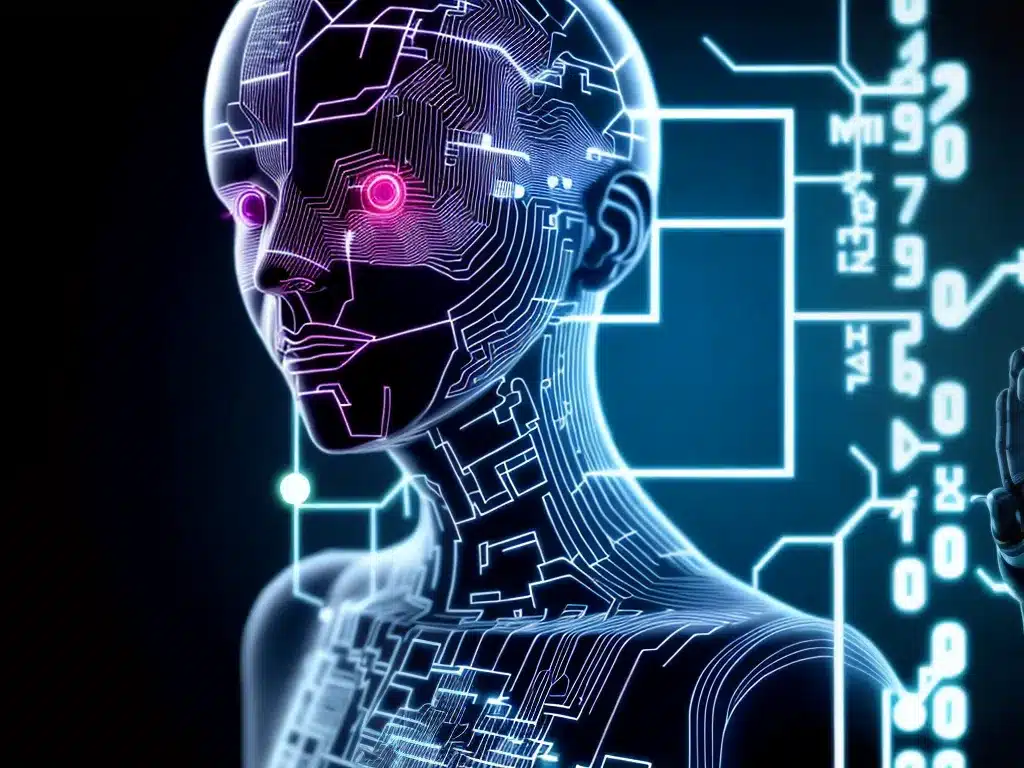
Introduction
Artificial intelligence (AI) has made tremendous strides in recent years, with systems like AlphaGo beating the world’s best human players in complex games and automated chatbots holding impressively human-like conversations. However, despite these feats, AI still lacks the adaptive and creative intelligence that comes naturally to biological life. This has led some researchers to propose reimagining AI systems as living technologies that embed key properties of life, such as metabolism, reproduction, and evolution. In this article, I will explore the vision behind this bio-inspired approach to AI and discuss its potential to transform how intelligent systems are built.
The Limits of Today’s AI
Modern AI relies heavily on machine learning, training algorithms on massive data sets to recognize patterns and make predictions. However, this method has important limitations:
-
Narrow focus: Current AI excels at specific tasks but lacks generalized intelligence. Systems like AlphaGo master the game of Go but cannot transfer that skill to other domains.
-
Brittleness: Machine learning models are fragile and fail unpredictably when given new types of data that differ from their training sets. They lack human common sense.
-
Data dependence: Today’s AI is only as good as its data. It cannot autonomously acquire new knowledge and skills beyond its training.
-
Static architecture: Once designed, the architecture of most AI systems remains fixed. They cannot reconfigure and rewire their own internals like biological brains.
These limitations suggest that despite its impressive capabilities, today’s mainstream AI lacks key characteristics of life that enable flexibility, creativity, and autonomy. This has motivated some researchers to seek inspiration from nature.
Properties of Living Systems
Living organisms have distinctive properties that allow robust adaptation, growth, and self-directed behavior. Some key characteristics include:
-
Metabolism: The ability to extract energy and raw materials from the environment to power internal processes.
-
Self-organization: The ability to spontaneously assemble complex structures and behaviors from simpler components.
-
Homeostasis: The ability to self-regulate and maintain internal conditions for survival.
-
Reproduction: The ability to create offspring that inherit genetic information.
-
Evolution: Iterative cycles of reproduction, variation, and selection that enable populations to adapt over generations.
If we could imbue AI systems with life-like properties, they may develop more plastic, resilient, and autonomous intelligence. This bio-inspired approach is driving promising new directions in AI research.
Bio-Inspired AI
Several research initiatives are now underway to create AI with life-like properties:
Digital Metabolism
Some researchers are building AI agents with digital metabolisms – the ability to extract computational resources from their environment to power cognition and growth.
For example, Ioannis Ieropoulos’ EcoBot project uses microbial fuel cells powered by bacteria to energize lifelike robots. The robots can scavenge energy sources from their surroundings, exhibiting a primitive metabolism.
This approach could enable AI systems to autonomously acquire their own energy and raw materials, reducing human maintenance.
Computational Homeostasis
Other researchers are focused on homeostasis – mechanisms for self-regulation and stability.
The EU-funded ASSISIbf project is developing a brain-inspired chip architecture that maintains homeostasis. It utilizes a simulated hormone system to self-regulate computational processes.
By embedding homeostatic mechanisms, AI systems may become more robust, stable, and autonomous.
Automatic Architecture Design
Rather than using fixed, hand-engineered architectures, some researchers are enabling systems to self-organize and reconfigure their own internals.
Google’s AutoML project uses evolutionary algorithms to automatically generate neural network architectures tailored for specific tasks.
Self-organizing architectures could enable AI systems to start simple but autonomously complexify and improve themselves over time, much like natural organisms.
AI That Can Reproduce & Evolve
Pulling together multiple life-like properties, researchers at Tufts University and ETH Zurich have created AI systems with digital genomes that undergo mutation, replication, and selection.
The autonomous systems can reproduce their genomes and algorithms to generate offspring that inherit their features. Selection pressure causes the offspring to improve at assigned tasks over generations.
This demonstrates the exciting potential of AI that harnesses the evolutionary mechanisms so central to biological adaptation.
Toward AI That Grows Itself
While still exploratory, bio-inspired AI could transform how intelligent systems are built in the future. Rather than meticulously hand-designing systems, engineers may create seeds that grow themselves.
Such living technologies could continuously self-improve, creatively adapt to new environments, and require less human maintenance over time. The limits of bio-inspired AI remain unknown.
In summary, reimagining AI as a living technology offers an exciting path to more flexible, resilient, and autonomous artificial intelligence, bringing us closer to systems that replicate the creative power of life. While significant challenges remain, the future looks promising as researchers continue drawing inspiration from nature’s genius.












